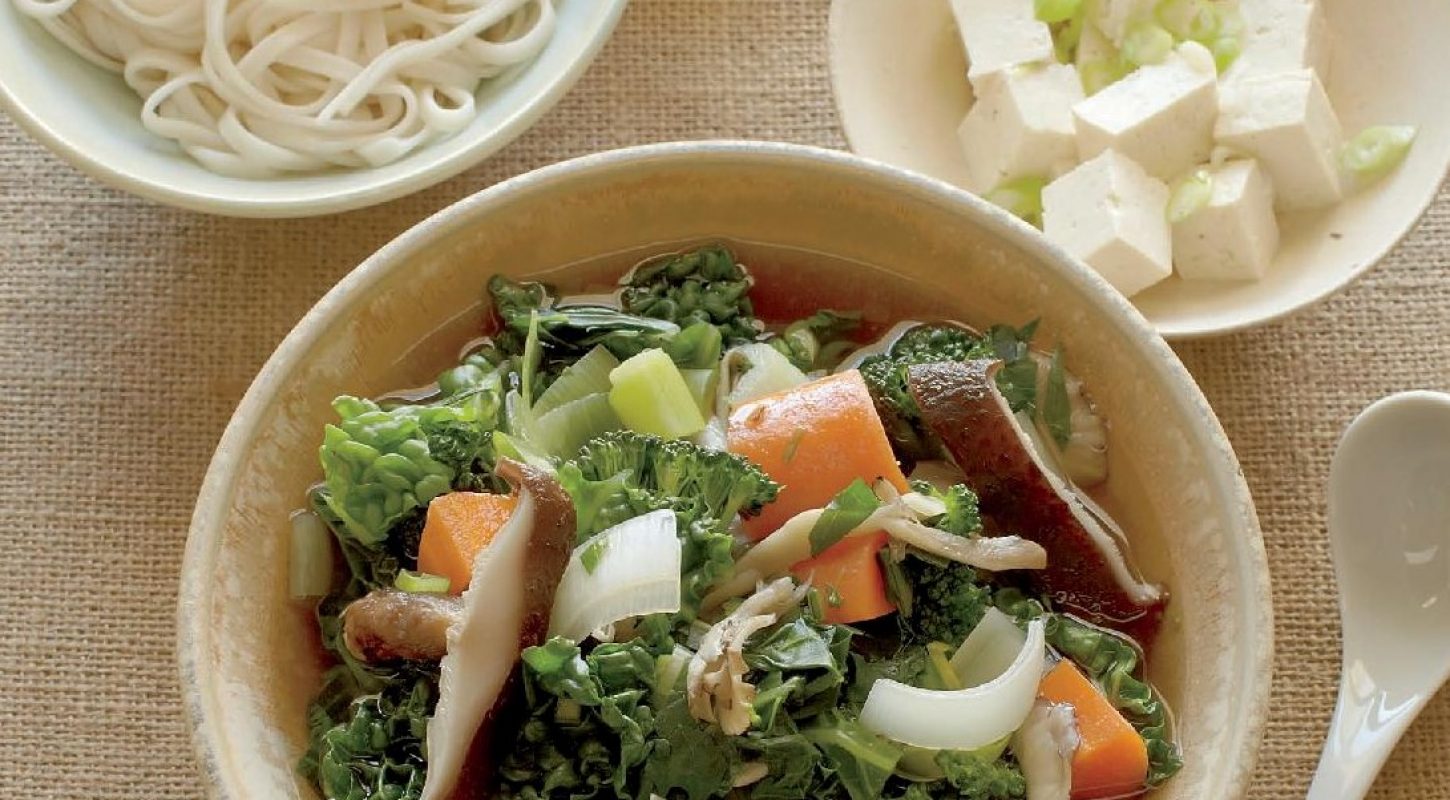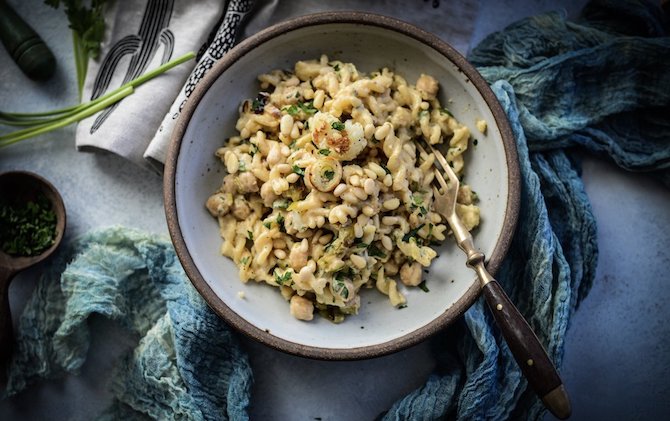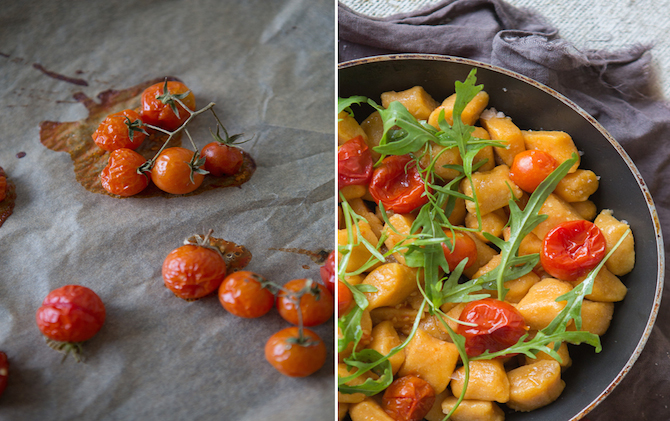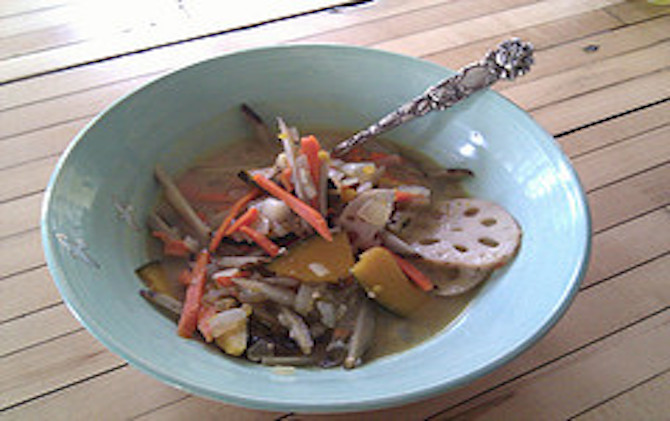This Nabeyaki Udon is a traditional Japanese dish that is generally cooked in an earthenware or iron pot. This dish is so full of noodles and vegetables that it’s pretty much a complete meal as is, but if you want more protein, add some tofu cubes to the simmering broth or serve a protein on the side. Either way, this dish is light, fresh, and satisfying. The shiitake mushroom soaking water gives the broth a deep flavor.
Nabeyaki Udon
SERVES 5
Sauce
- 2–4 teaspoons shoyu
- 3–4 tablespoons water or soaking water from shiitake mushroom
- 5–8 drops ginger juice (grate a 1″ piece of ginger and squeeze out the juice with your fingers)
- 1⁄2 teaspoon fresh lemon juice or rice vinegar
Udon
- 1 carrot, cut into bite-size pieces
- 1 stalk broccoli, cut into bite-size pieces
- leek, white and green parts, cleaned and cut into large bite-size pieces
- bok choy leaves, cut into bite-size pieces, or 1 baby bok choy
- 1 handful bean sprouts
- 2–3 napa cabbage leaves or collards, roughly chopped
- 4–6 dandelion greens, roughly chopped
- 1 (8-ounce) package udon noodles
- 1″ piece kombu
- 1 dried shiitake mushroom
- 1 tablespoon maitake mushrooms
Directions
Place the shiitake and maitake mushrooms in a small bowl with water to cover. Soak for 30 minutes or until softened. Bring a large pot of water to a boil for the noodles. Stir together the sauce ingredients in a small bowl and set aside.
Arrange all the vegetables on a plate near your stove. Remove the mushrooms from their soaking liquid, reserving the liquid. Slice and add to the plate with the vegetables.
Cook the noodles in the boiling water until just al dente; drain and set aside.
In a nabe or ceramic pot that is safe for use on the stovetop (if you don’t have one, you can use a regular pot), bring 2 to 3 cups water and the mushroom soaking liquid to a boil. Add the kombu and mushrooms and lower the heat so the water is simmering. Begin adding the vegetables one at a time, starting with the carrots and other vegetables that take longer to cook. Most of the vegetables shouldn’t take longer than 2 minutes to cook. You want them fresh and light, not mushy or overcooked.
Bring the nabe pot to the table. Give each person 3 bowls: 1 for their noodles, 1 for their nabe vegetables, and 1 small bowl for their dipping sauce. Everyone takes from the big nabe pot, dipping their vegetables and noodles in the dipping sauce as desired. The whole meal is pretty and fun and healing.
Make sure to drink the vegetable broth at the end. It has a very subtle flavor and all the goodness of the vegetables that cooked in it.
Variations:
You can lay fried mochi on top of the vegetables and garnish with toasted nori pieces and scallions! If you feel particularly ambitious, serve topped with a few pieces of Vegetable Tempura (page 274 of THE KIND DIET; A SIMPLE GUIDE TO FEELING GREAT, LOSING WEIGHT, AND SAVING THE PLANET).
Excerpt from THE KIND DIET; A SIMPLE GUIDE TO FEELING GREAT, LOSING WEIGHT, AND SAVING THE PLANET. Copyright © 2009 by Alicia Silverstone. Published by Rodale Books, an imprint of Penguin Random House.




